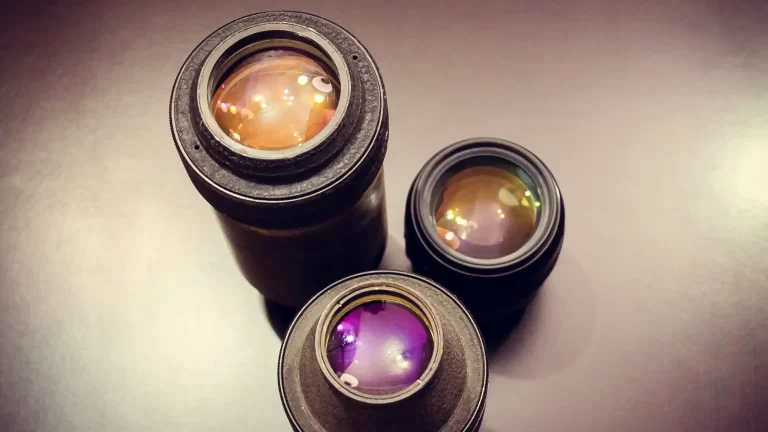Copper Mirrors: Reflecting the Future of Telescope Optics
Telescopes have long been our windows to the universe, enabling us to gaze at distant stars, galaxies, and celestial wonders. Among the many components that contribute to their performance, mirrors hold a special place. While glass mirrors have been the traditional choice, a unique and promising alternative has emerged – copper mirrors. In this blog post, we’ll delve into the world of copper mirrors for telescopes and uncover the advantages they offer to astronomers and stargazing enthusiasts.
The Copper Advantage:
- High Thermal Conductivity: Copper boasts exceptional thermal conductivity, which means it efficiently dissipates heat. This property is crucial for maintaining a stable mirror temperature, reducing the potential for image distortion caused by temperature fluctuations.
- Lightweight and Sturdy: Copper mirrors are lightweight compared to traditional glass mirrors, making them easier to handle and integrate into telescope systems. Their durability ensures they can withstand the rigors of transportation and varying environmental conditions.
- Reflective Purity: Copper mirrors offer high reflectivity across a wide range of wavelengths, ensuring that incoming light is efficiently collected and directed to the eyepiece or camera. This property enhances image clarity and detail.
- Low Expansion Coefficient: Copper’s low coefficient of thermal expansion minimizes the distortion caused by changes in temperature. This stability is especially valuable for large telescope mirrors, where even slight deformations can affect image quality.
- Enhanced Cooling Capabilities: The excellent thermal conductivity of copper allows for efficient cooling, reducing the time required for the mirror to reach ambient temperature. This is particularly advantageous for telescopes used in research or observation scenarios requiring rapid adjustments.
Copper Mirror Applications:
- Astronomy and Astrophotography: Copper mirrors are finding their place in telescopes used by amateur astronomers and astrophotographers. Their ability to maintain a stable temperature and produce high-quality images make them ideal for capturing stunning views of the cosmos.
- Professional Observatories: Large copper-coated mirrors are being adopted in professional observatories and research facilities to ensure optimal image quality and accurate data collection during extended observations.
- Space Telescopes: The lightweight nature of copper mirrors is an asset in space telescope design, where minimizing weight is crucial for launch and deployment. Copper mirrors have the potential to contribute to future space-based observatories.
Challenges and Considerations:
While copper mirrors offer numerous advantages, they also present challenges. The reflective surface needs careful maintenance to prevent oxidation, which can impact reflectivity. Additionally, the polishing process for copper mirrors requires specialized techniques due to the material’s unique properties.
Conclusion:
Copper mirrors are rapidly emerging as a valuable innovation in the field of telescope optics. Their exceptional thermal conductivity, lightweight design, and high reflectivity open new horizons for astronomers seeking clearer, more detailed views of the universe. As the technology continues to evolve, we can anticipate even more impressive applications of copper mirrors in both amateur and professional astronomy. So, whether you’re an astronomy enthusiast or a professional stargazer, keep an eye on the captivating possibilities that copper mirrors bring to the world of telescopes.
Related Readings:
- Copper Mirrors: A Critical Component in Laser Beam Control
- The Role of Copper Mirrors in Solar Concentrators
FAQs on Copper Mirrors: Reflecting the Future of Telescope Optics
1. What are copper mirrors and how are they different?
Copper mirrors are telescope optics made from polished copper surfaces, offering unique thermal properties and exceptional infrared reflection.
2. Why are copper mirrors considered the future of telescope optics?
Copper’s high thermal conductivity and low thermal expansion make it ideal for maintaining stable mirror shape, crucial for precise observations.
3. How do copper mirrors improve astronomical observations?
Their ability to quickly adjust to temperature changes reduces distortion, resulting in sharper and more detailed images of celestial objects.
4. What telescope types benefit from copper mirrors?
Copper mirrors find use in various telescopes, especially those targeting the infrared spectrum, like space-based observatories and ground-based telescopes.
5. Can copper mirrors replace traditional mirrors completely?
Copper mirrors are a valuable addition, particularly for infrared observations, but other materials like glass still dominate visible light observations.
6. How do copper mirrors fare in extreme environments like space?
Copper’s resilience to temperature variations makes it suitable for space telescopes where temperature changes can be extreme.
7. Are there specific copper alloy compositions used for mirrors?
Yes, various copper alloys are used to enhance mechanical stability and durability while preserving the reflective properties.
8. Do copper mirrors require special coatings?
Yes, protective coatings are applied to prevent oxidation and maintain reflectivity, especially in vacuum and space conditions.
9. How do copper mirrors contribute to exoplanet research?
Copper mirrors facilitate infrared observations crucial for studying exoplanet atmospheres and detecting potential signs of habitability.
10. Are there notable telescopes using copper mirrors?
Telescopes like the James Webb Space Telescope (JWST) utilize copper mirrors to enhance infrared observations and study distant galaxies.








